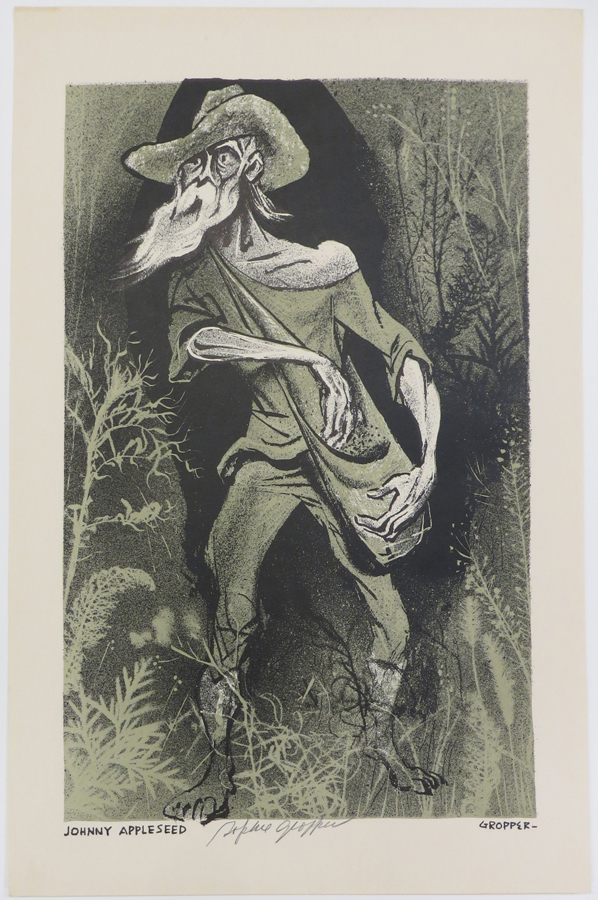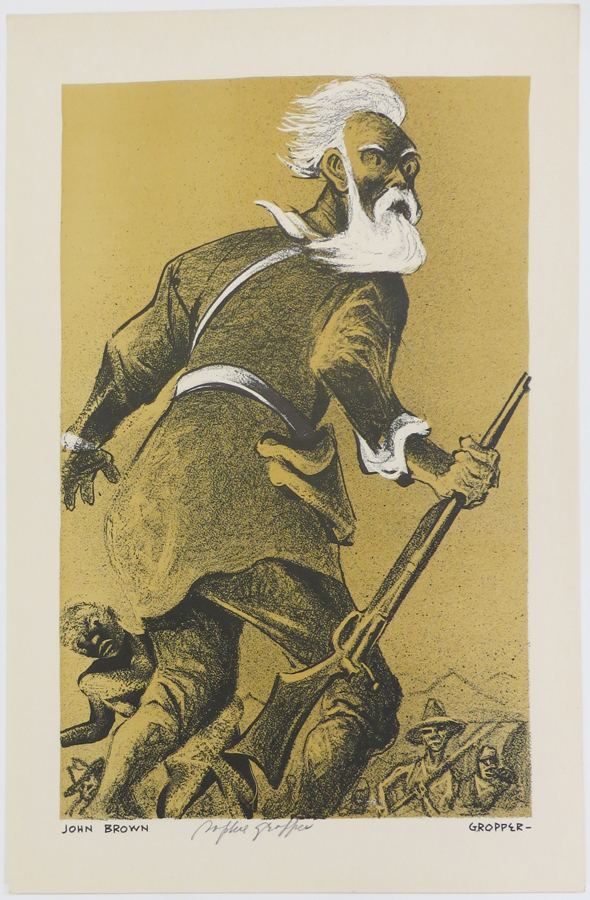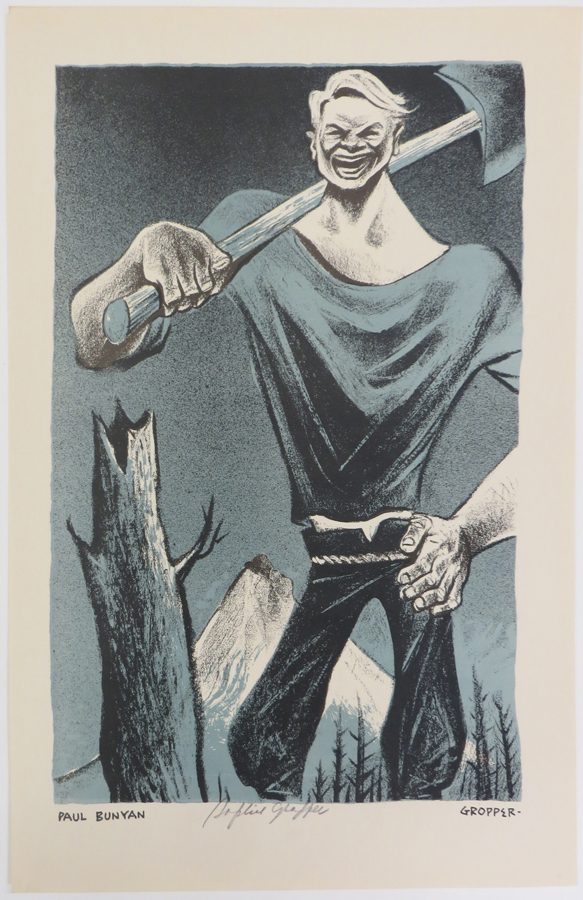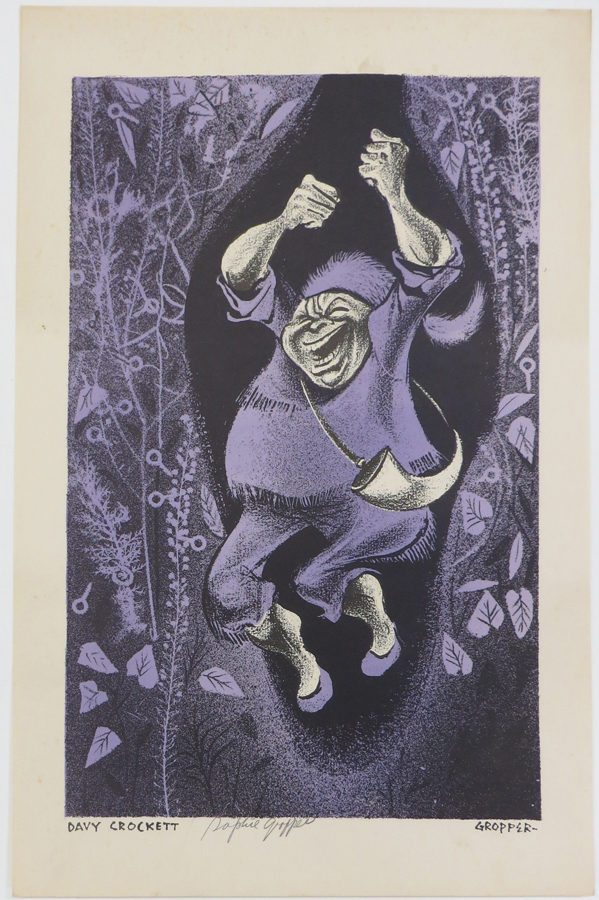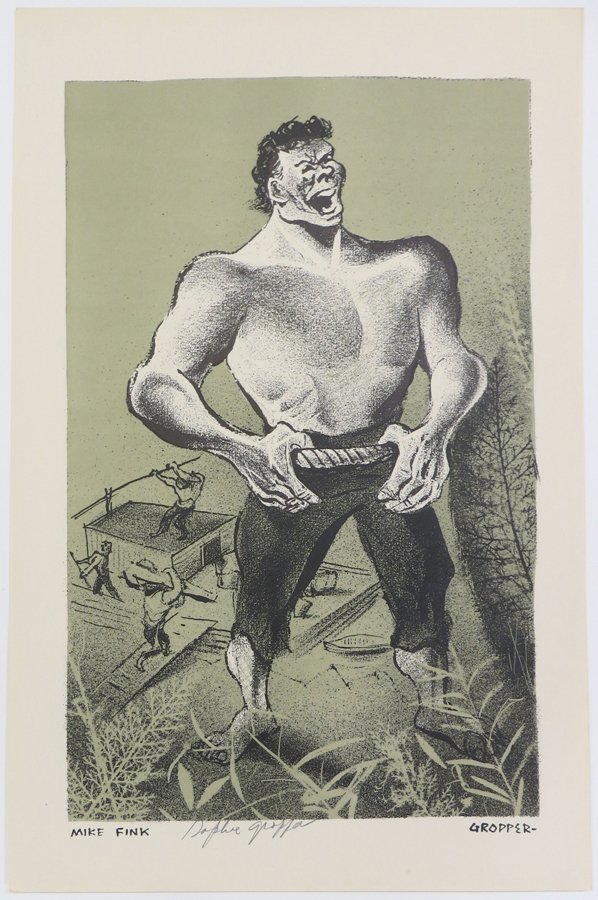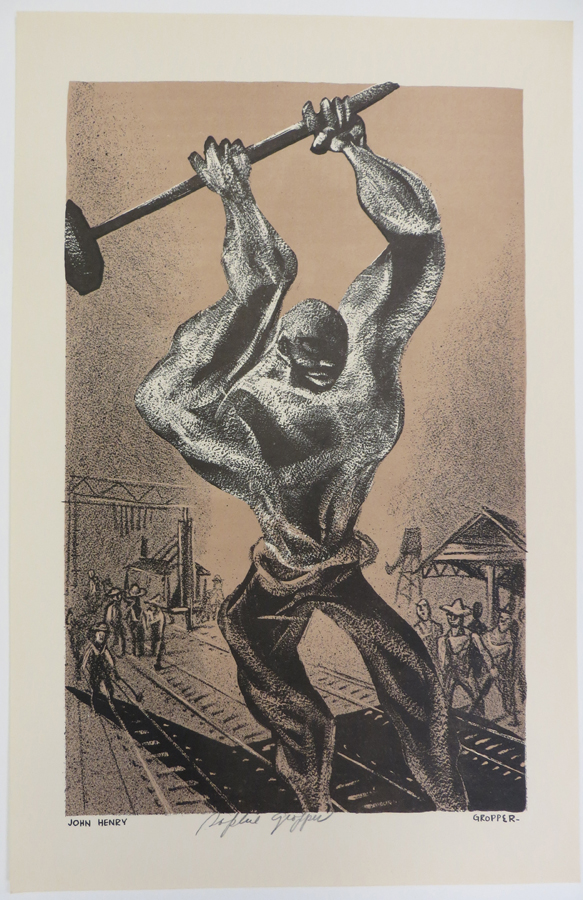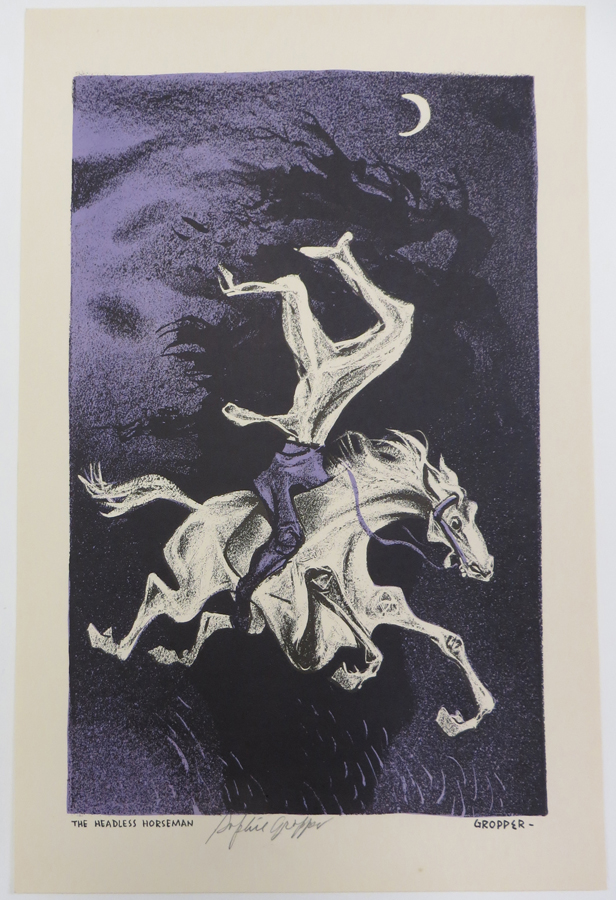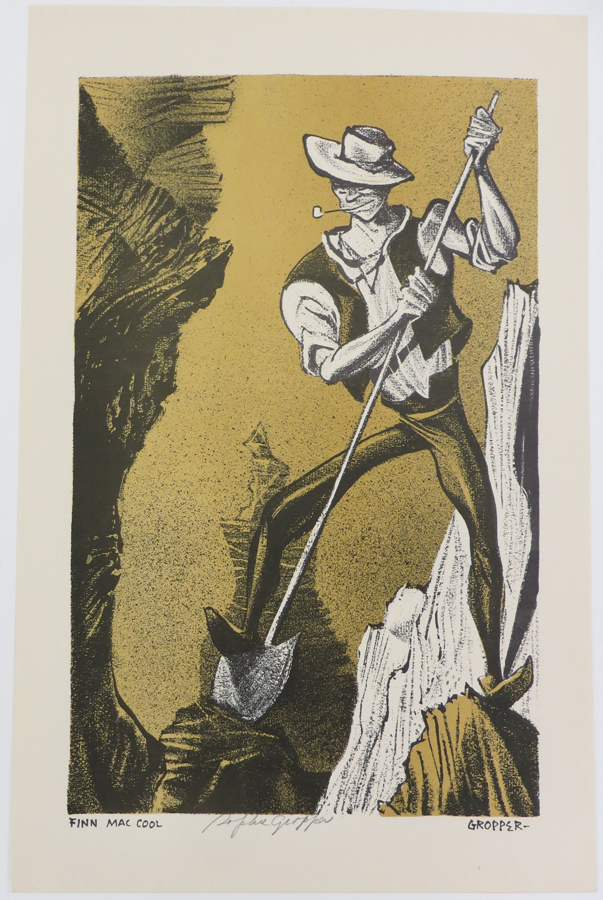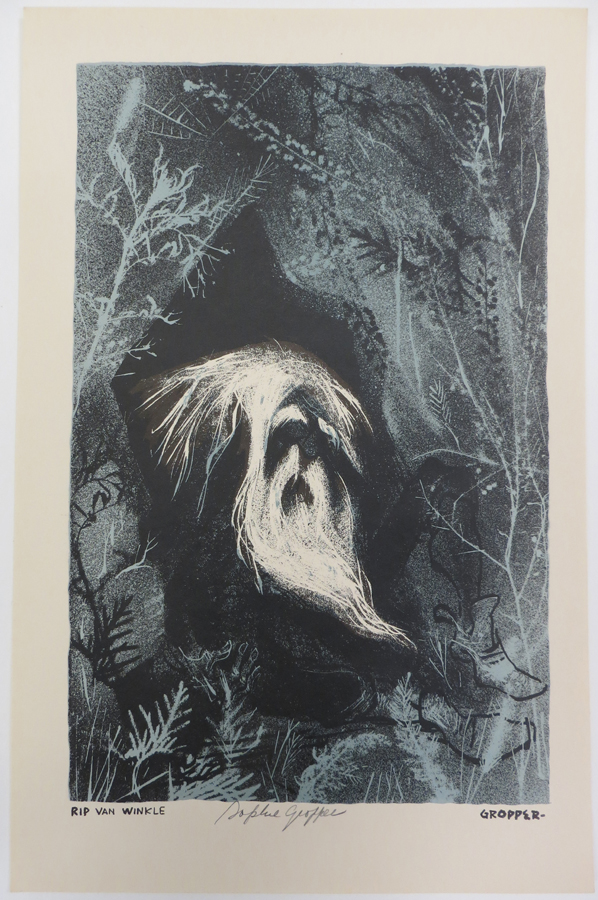America, Its Folklore
In 1946, Associated American Artists began to sell mass-produced 34-by-23-inch printed reproductions of a painted pictorial map Gropper completed in 1945. The map, titled America, Its Folklore, depicted dozens of folk figures and legends from American history as well as its literary and oral traditions, superimposed over a map of the continental United States. The map was widely purchased via mail-order for use in school classrooms and municipal libraries throughout the United States in the late 40s and early 50s. Additionally, the U.S. Department of State bought and distributed over 1,700 copies of America, Its Folklore to its libraries and information centers across the globe as part of the Overseas Library Program, a post-war propaganda initiative aimed at spreading "facts and solidly documented explanations of the United States, its people, geography, culture, science, government, institutions and thinking" (source), between 1946 and 1953. However, in 1953, Roy Cohn travelled to a number State Department libraries in order to identify Communist-directed works in the libraries' possession; because of Gropper's leftist political leanings and history of publishing cartoons in Socialist periodicals, America, Its Folklore fell squarely in this category according to Cohn. As a result, Gropper was called to testify in front of the Senate Permanent Subcommittee on Investigations where he was questioned about the map and his political affiliations by Senator Joseph McCarthy. Despite not being a member of the Communist party, Gropper was subsequently blacklisted, and the State Department destroyed all of its copies of the map (source). Placing your mouse on the map allows you to zoom in and pan across the map to see each figure in detail. The high-res map image comes from the Map Collection of the Library of Congress's Geography and Map Division (which also holds copies of other maps in the AAA's America map series) and has been widely distributed as a public domain image.

